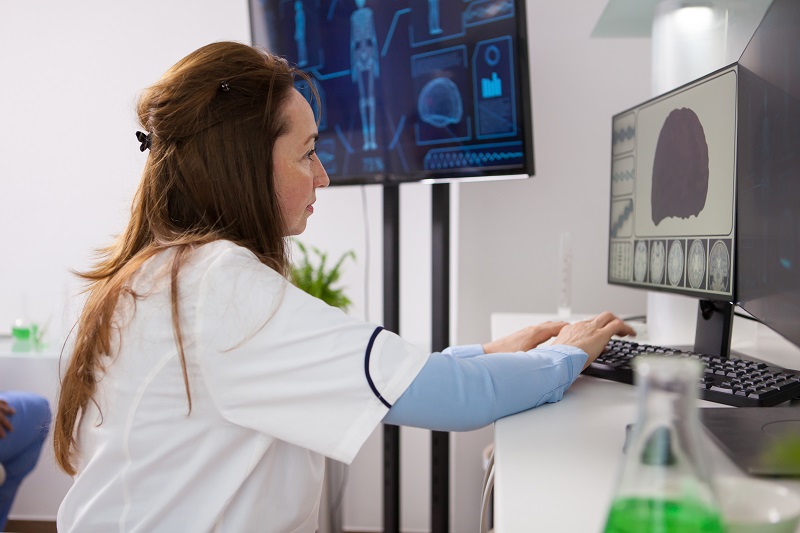Unveiling the Crucial Role of Radiology in the Landscape of Modern Healthcare

As our world evolves, so do the complexities of healthcare. Central to this intricate web is radiology, an underappreciated yet indispensable pillar of modern medicine. But what exactly is its role in today’s healthcare scene, and how does it help in diagnosing and treating diseases?
Radiology as a Medical Specialty
Radiology, a medical specialty often behind the scenes, uses imaging to diagnose and treat diseases within the body. With advancements in technology, radiology has drastically evolved, branching out into sub-specialties such as diagnostic radiology, interventional radiology, and nuclear medicine.
Diagnostic Radiology
Diagnostic radiology involves non-invasive methods to view the body’s internal structures. Techniques like MRI, CT scans, X-rays, and ultrasounds provide images that help determine the nature and extent of diseases, guiding physicians towards appropriate treatments.
Interventional Radiology
Interventional radiology, on the other hand, is a subspecialty that performs minimally invasive procedures using image guidance. These procedures can often replace open surgical procedures, reducing patient risk and recovery time. Common interventional radiology procedures include angioplasty, biopsy, and embolization.
Radiologic Technologists and Radiographers
Radiologic technologists and radiographers play vital roles in the radiology department. They operate imaging machines, carry out imaging procedures, and ensure patient safety, contributing significantly to the success of diagnostic and therapeutic interventions.
Role of Radiology in Disease Detection and Diagnosis
As a medical marvel, radiology has been instrumental in revolutionising the healthcare sector. The primary role of radiology, as we are all aware, is intrinsically linked to disease detection and diagnosis. It’s like having a personal, non-invasive tour inside the human body, a tour that can potentially save lives. Radiologic imaging technology, including MRI, CT scans, and X-rays, provides doctors with a clear view of what’s happening inside their patients.
Imagine the ability to detect a life-threatening condition like cancer, heart disease, or neurological disorders early, without making a single incision. That’s the power of radiology. This early detection, which was once just a medical dream, is now a reality that leads to a better prognosis and significantly improved survival rates.
But it’s not just about detection and diagnosis. Radiology also plays a pivotal role in monitoring treatment progress and guiding medical procedures. It helps doctors understand if a particular treatment is working or if adjustments are needed. Furthermore, it assists surgeons during procedures by providing real-time images of the area being treated.
Radiology, in essence, is like the third eye of medicine, providing a unique perspective into the human body. It continues to evolve with advancements in technology, thereby improving its accuracy and efficacy in disease detection and diagnosis. This makes it an indispensable tool in modern medicine, a tool that has undoubtedly saved countless lives and will continue to do so in the future. Therefore, the importance of radiology cannot be overstated. It is indeed the unsung hero of healthcare, silently contributing to the betterment of human health.
Advances in Radiology Technology
Radiology has witnessed significant advancements in technology, from the invention of X-ray to the development of 3D imaging. Today’s digital imaging, AI, and machine learning have revolutionized the field, enhancing accuracy in diagnosis and treatment.

Challenges and Future Directions
Despite its advancements, radiology faces challenges such as radiation risks, high costs, and the need for skilled professionals. However, with ongoing research and development, the future of radiology is promising. Advances in AI and machine learning are expected to optimize image analysis, improve diagnostics, and predict patient outcomes.
Conclusion
Radiology plays a pivotal role in modern healthcare, providing critical insights into disease detection and management. With advancements in technology, radiology will continue to evolve, offering more precise, efficient, and personalized care. As we look to the future, we can expect radiology to remain a cornerstone of medical advancements, driving forward the evolution of healthcare.
In essence, radiology is the silent hero of modern medicine, its importance often overlooked but never diminished. Through the lens of radiology, physicians can see beyond the surface, diagnosing and treating conditions that would otherwise remain hidden. As technology advances, so too will the role of radiology, promising a future of medical breakthroughs and improved patient care.